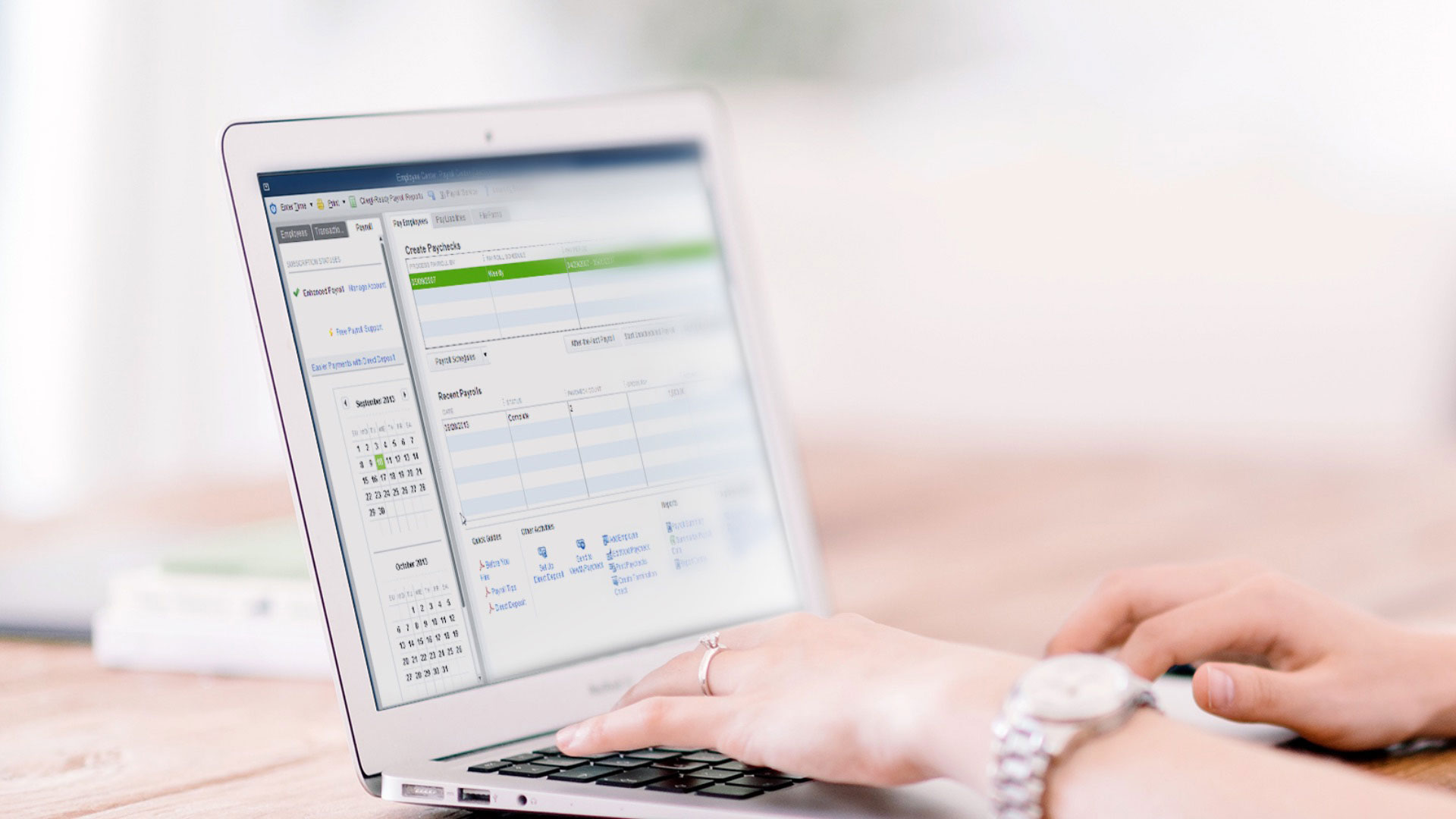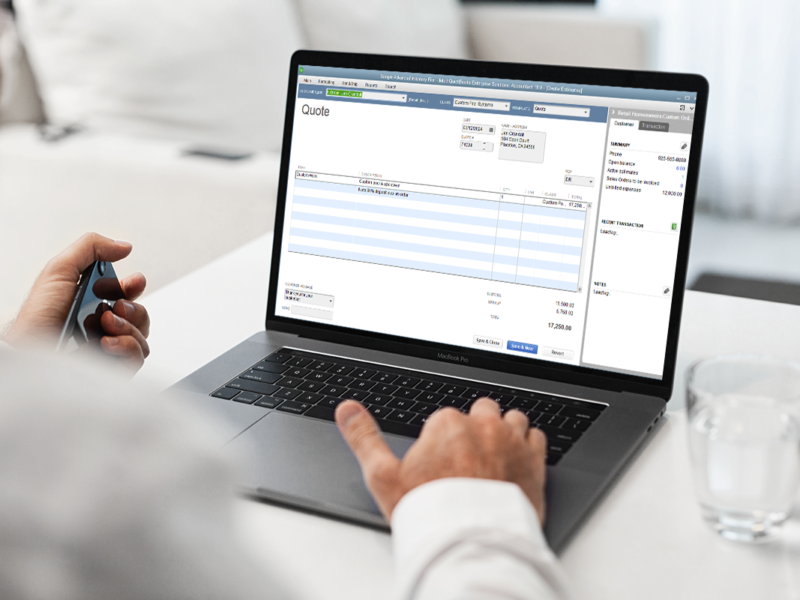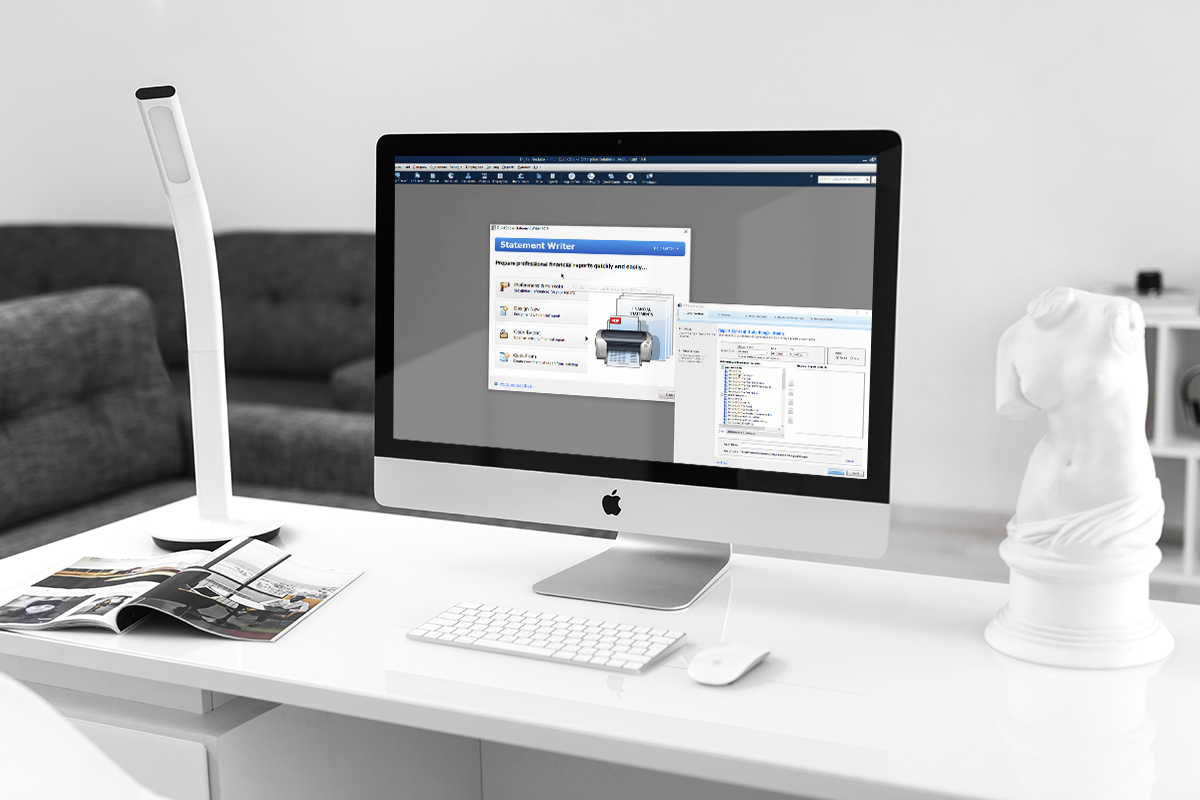
QuickBooks Portable File – Statement Writer
We look at restoring QuickBooks Desktop Statement Writer information in QuickBooks, after restoring a portable file. We observe, to start, the recovery process is applicable to situations where your data will have to be moved to another workstation. We explain why, here.
What is QuickBooks Desktop Statement Writer?
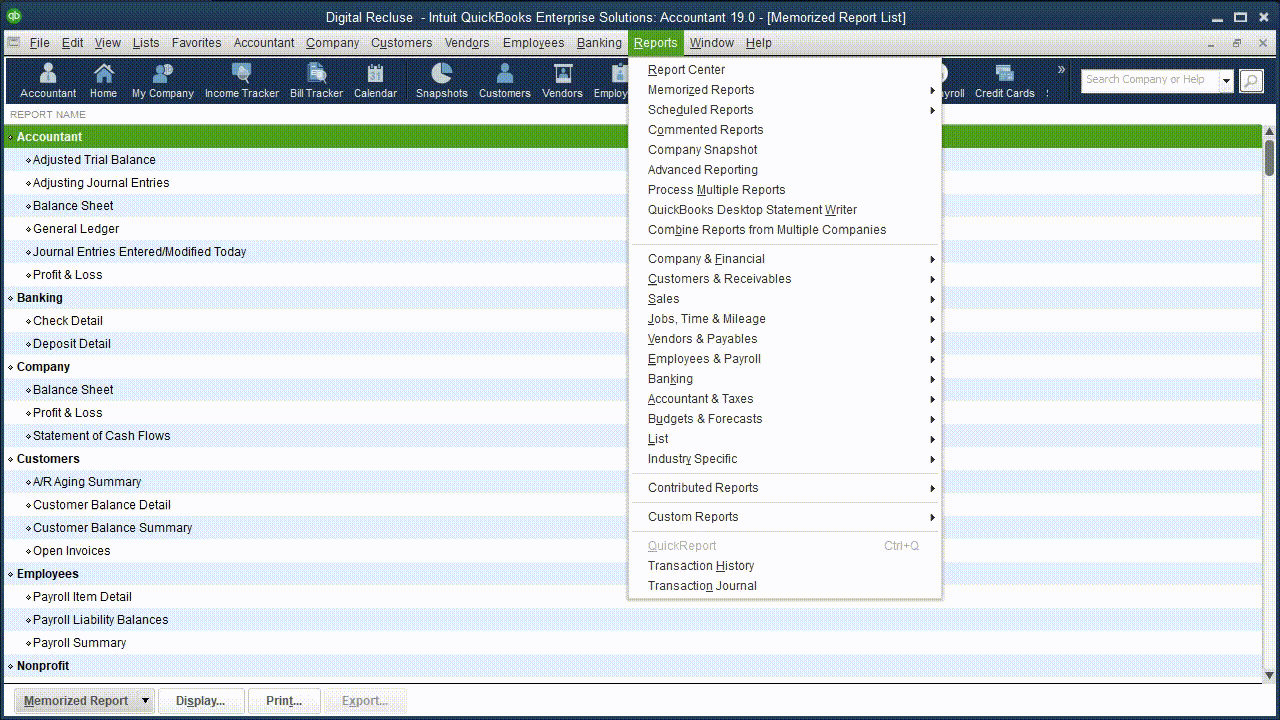
QuickBooks Statement Writer is an auxiliary application to provide financial statements closely aligned with Generally Accepted Accounting Principles (GAAP), which involves these:
- Your QuickBooks Company File holding the data
- Report Designer to tailor reports to your liking
- Microsoft Excel to show you the results from this combination; and the ability to adjust the worksheet.
How to Create a Basic Statement With Statement Writer

There are five overall steps. You have multiple data sources to gather into your overall statement. In this immediate example, you can start with these procedures.
- Click on “Design New”
- Select the “Selected Period” under “Report Date”
- Select your “From” and “To” dates.
- Click on any item in “Statement and Document Templates”
- Click on the arrow pointing to the right, between the left and right sections
- Provide a name for your statement report, in “Report Name”
- Click “Next”
Working With Columns in QuickBooks Statement Writer Report Designer
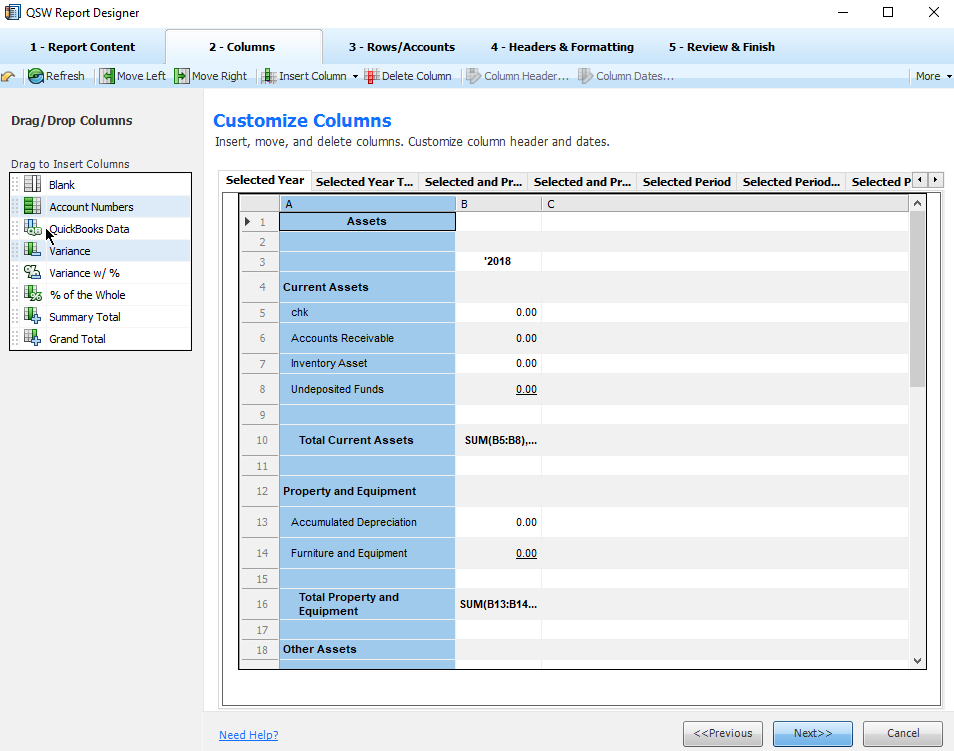
Here, you can arrange how the statement report will look – arranging the columns you see fit. After customizing, click “Next”
Working With Rows in QuickBooks Statement Writer Report Designer

You can do the same with rows in the worksheet you’re creating. After your done repositioning, click “Next”
Working With Headers/Footers in QuickBooks Statement Writer Report Designer
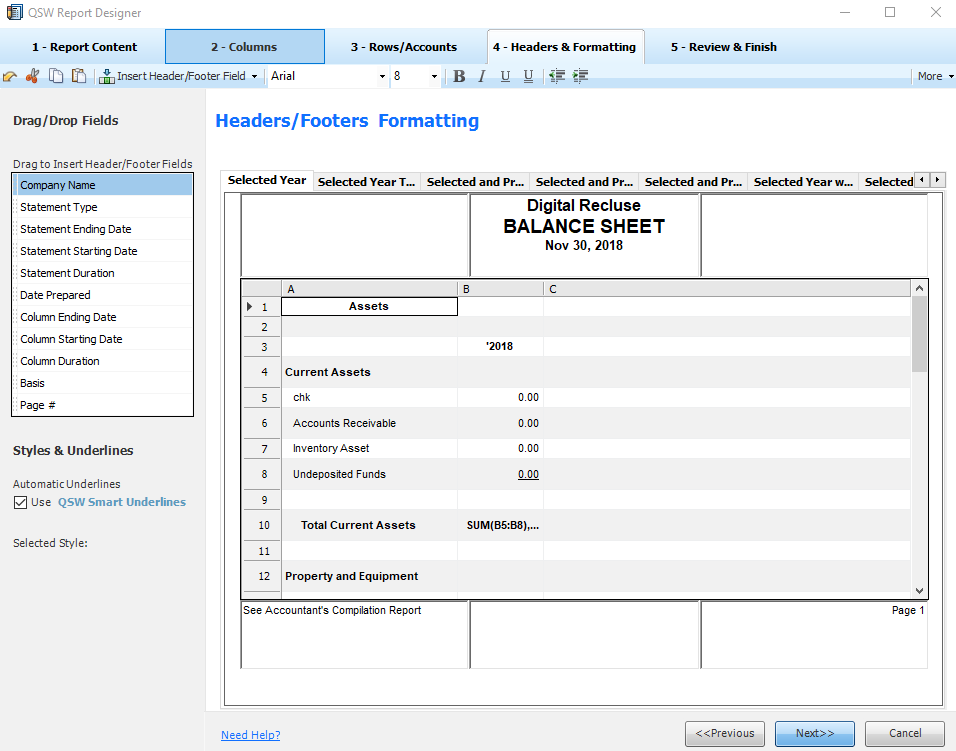
Here, you can draft and drop elements on the left, into the header or footer of the report. After you’re done, click “Next”
Finalizing Your Statement Report in QuickBooks Statement Writer Report Designer
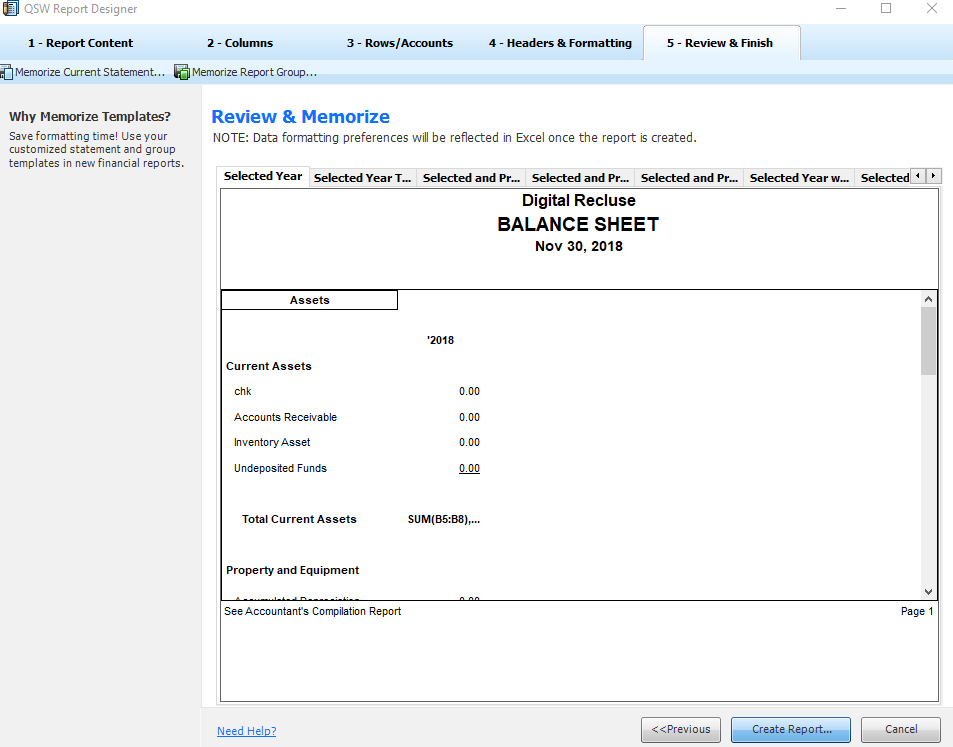
At any point, you can always click “Previous” to make changes, before clicking “Create Report”
Creating Your Statement Report in QuickBooks Statement Writer Report Designer

Depending on the size of your report, the creation may take a significant amount of time.
Be Watchful for Potential Errors from QuickBooks Statement Writer Report Designer

This is one error we encountered while generating a test report, after telling Report Designer to open the chosen file.
Your Finalized Statement Report from QuickBooks Desktop Statement Writer

This test report took a considerable amount of time to process and create – going from Report Designer to the Excel portion of generating it.
You can see the multitude of worksheets containing reporting data. The title bar of the window, and the Document section on its right, also indicate still being in Statement Writer – which speaks to level of QuickBooks Desktop integration with Microsoft Office applications, like Excel. The document section gives you a host of options to adjust the reporting data currently shown.
How to Customize QuickBooks Desktop Statement Writer After Your Report’s Created
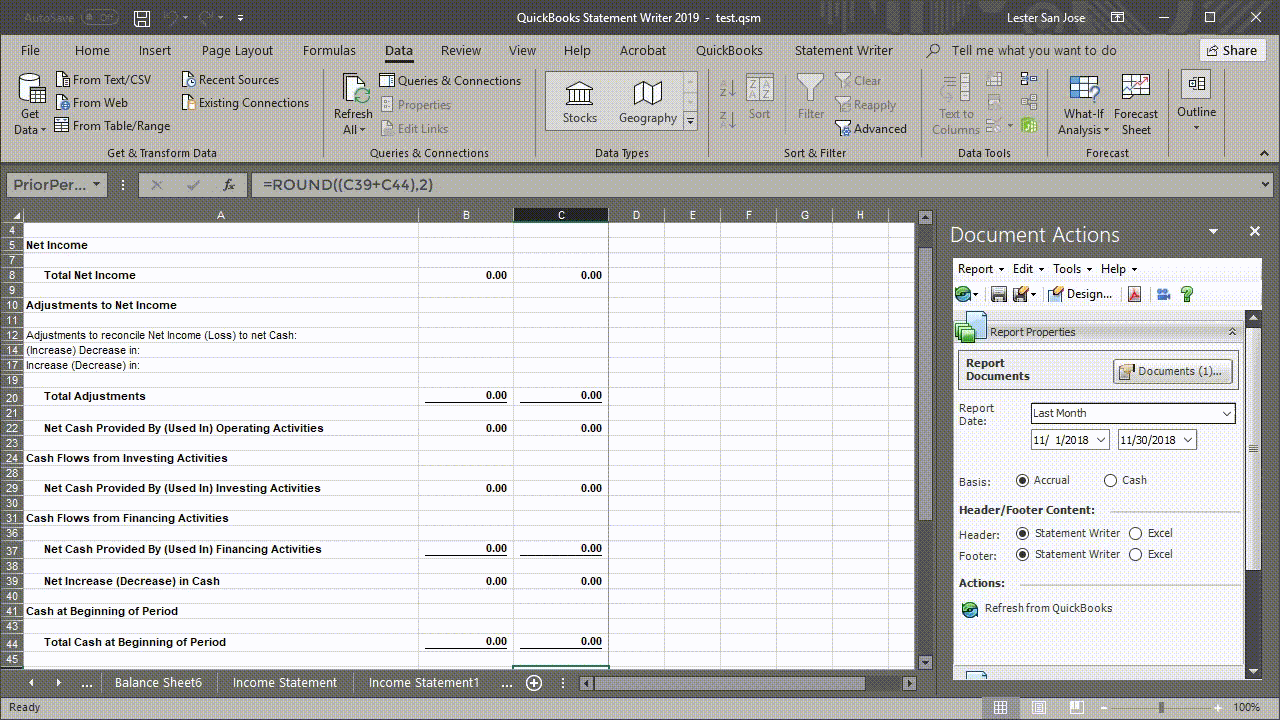
Even after creating your report, the customization doesn’t end.
From the Report Menu in Report Designer, “Report Data Preferences”

After choosing your preferences, just click “OK”
From the Report Menu in Report Designer, “Refresh From QuickBooks”
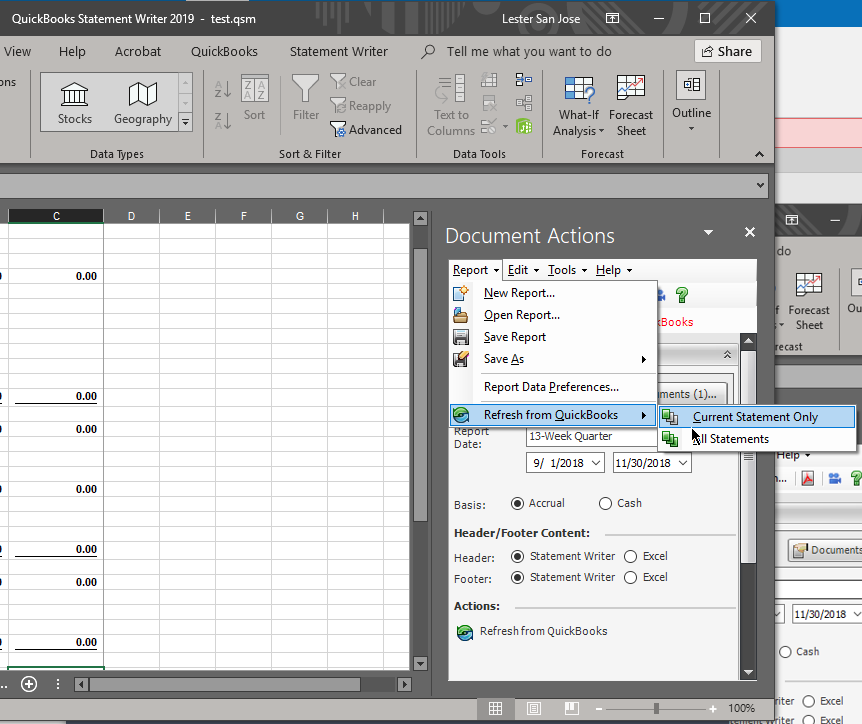
You can choose to refresh the active worksheet, or all worksheets containing data.
From the Edit Menu
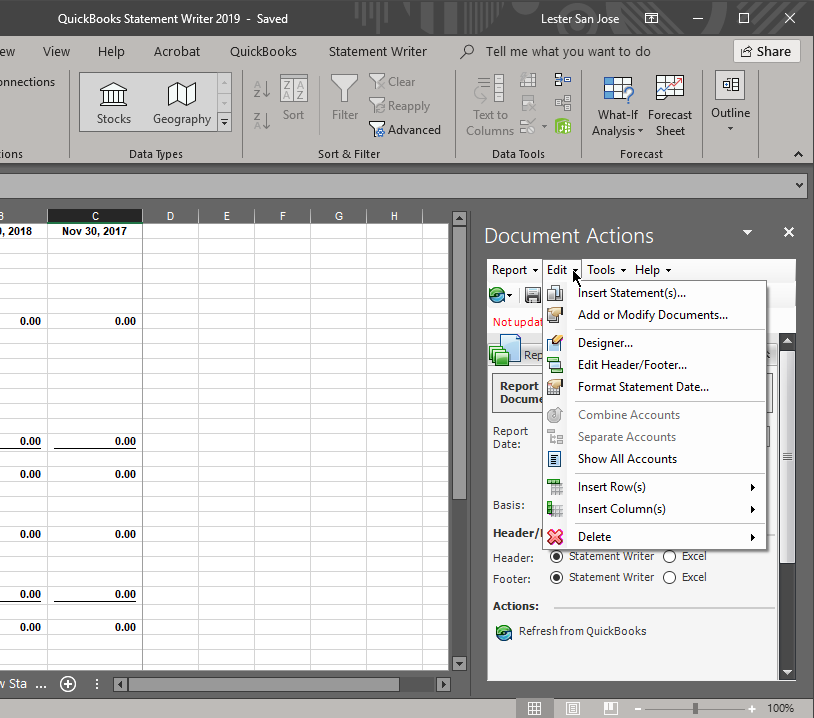
If you feel as though you’ve left something out, or kept something unneeded, you can make those changes from the edit menu.
- Insert statements: gives the opportunity to add extra reports you possibly forgot to include initially, or reports you realized you needed during or after the fact.
- Add/Modify Documents: gives the opportunity to give extra templates to your report.
- Designer: takes you back to the wizard where you designed a new statement report, from scratch.
- Edit Header/Footer: You can still change the appearance or content of the header and footer – respectively.
- Format Statement Date: change the appearance of the date on the report you create.
- Show All Accounts/Separate Accounts/Combine Accounts: you can select accounts in your Chart of Accounts to show on the report.
- Insert Rows/Columns: You can add other columns and rows to the report. It appears to be a fixed list of what can be inserted.
- Delete: rows, columns, or current statement – which is the active worksheet.
From the Tools Menu
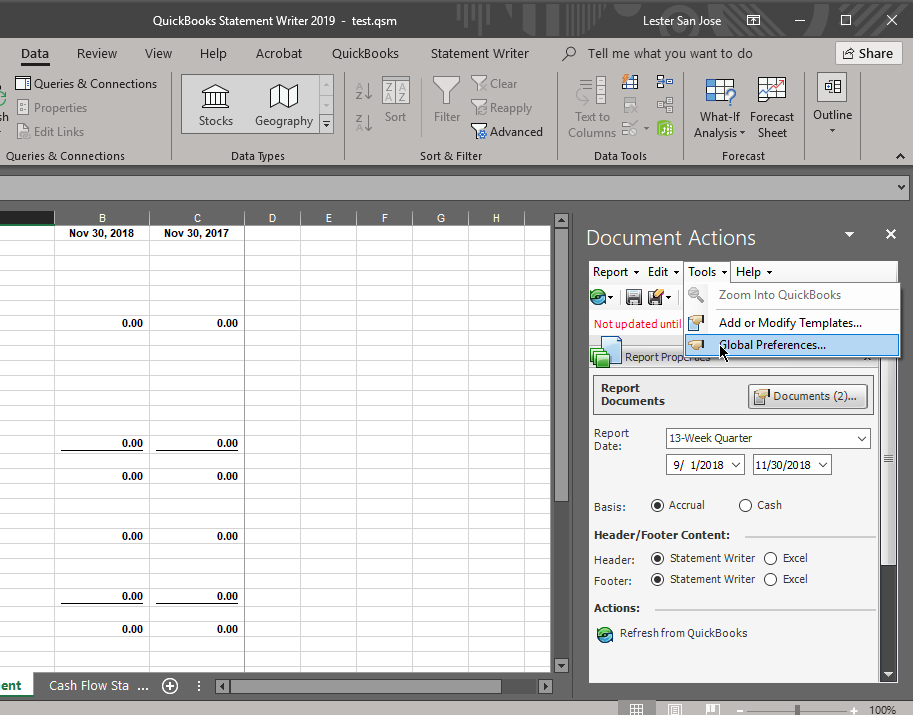
You have more customization options – especially when you explore Global Preferences.
With “Global Preferences,” you can do the following:
- Change the Default Save Locations
- Run Diagnostics to make sure your workstation, QuickBooks Desktop and QuickBooks Statement Writer will work well together.
- Enter your business information in your documents made
- Change the Styles or appearance of your Statement Reports
- View the QuickBooks Statement Writer resources – like the Community
- Visit the QuickBooks Statement Writer Support Center
- Download additional Statement and Document Templates
- Keep up-to-date on Statement Writer News.
You can infer, at this point, the investment to create these reports can be potentially vast – especially when you want to customize or personalize your reports. If you ever have to make the tough decision to restore a back up or portable file onto another workstation, you’ll see – shortly – how to archive or bring back your statement you spent time creating.
How Do I Back Up or Restore My Statements Made in QuickBooks Statement Writer?
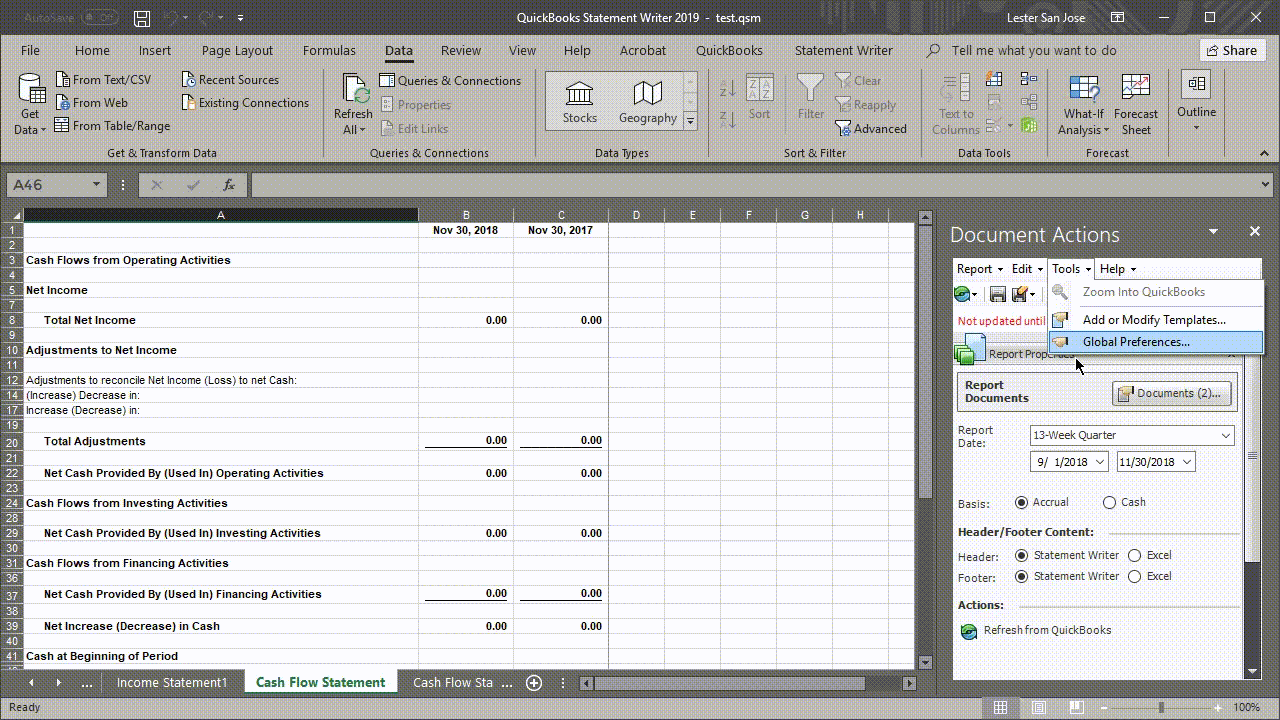
This is just one of the ways to locate your statement writer data.
- Locate your statements folder
- Copying and pasting it to a chosen archiving folder you want to back up your templates and reports – preferably on a removable or external storage device.
- The next time you open QuickBooks Statement Writer Report Designer, you would just click or choose “Open Report.” From there, click on a recently accessed file (if any show), or click “Browse to Open.”

It’s important to back up the folder, as the file alone isn’t enough.
You Can Choose Where to Save Your Report and Templates, via “Save As”
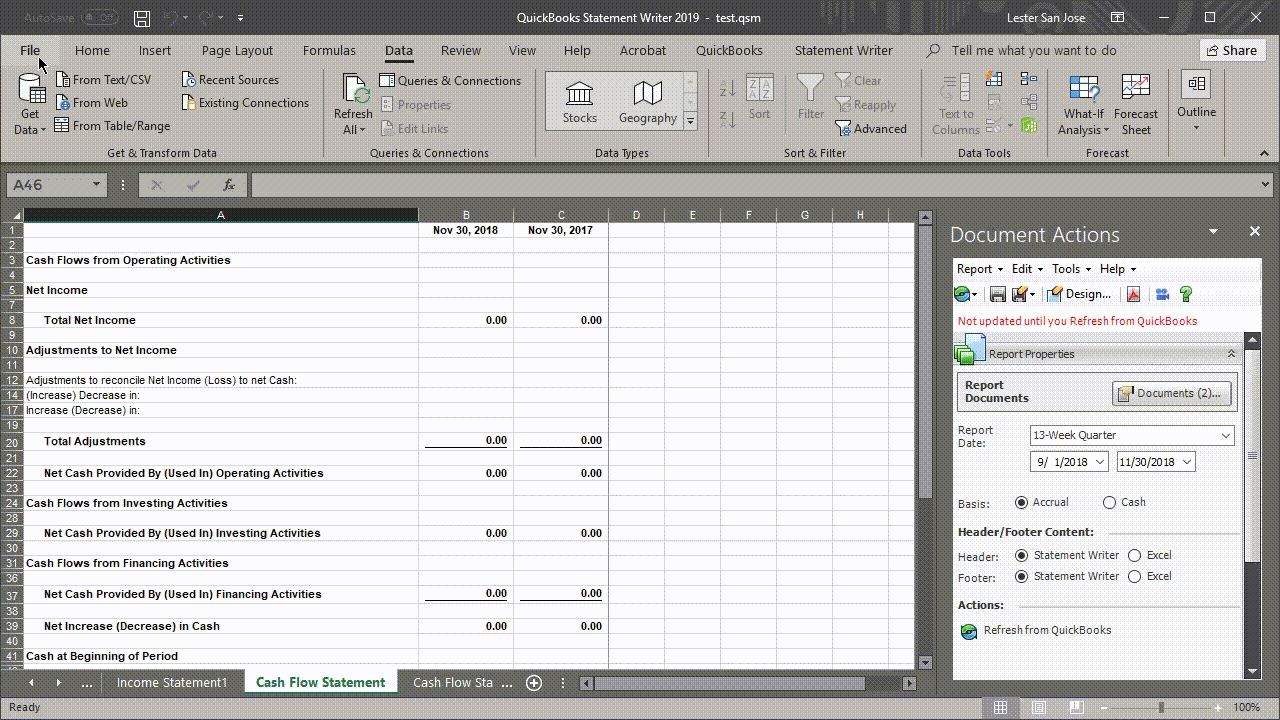
What this indicates is where the statement writer data location isn’t tightly connected to statement writer itself.
Although the file location isn’t as requisite for QuickBooks Statement Writer, unlike a Company File , the default locations aptly categorizes reporting templates and data – according to the company file using it. But, if you decided to, you can still save the folders however or wherever you want. What needs to be kept in mind is collection of files making up the statement report itself.
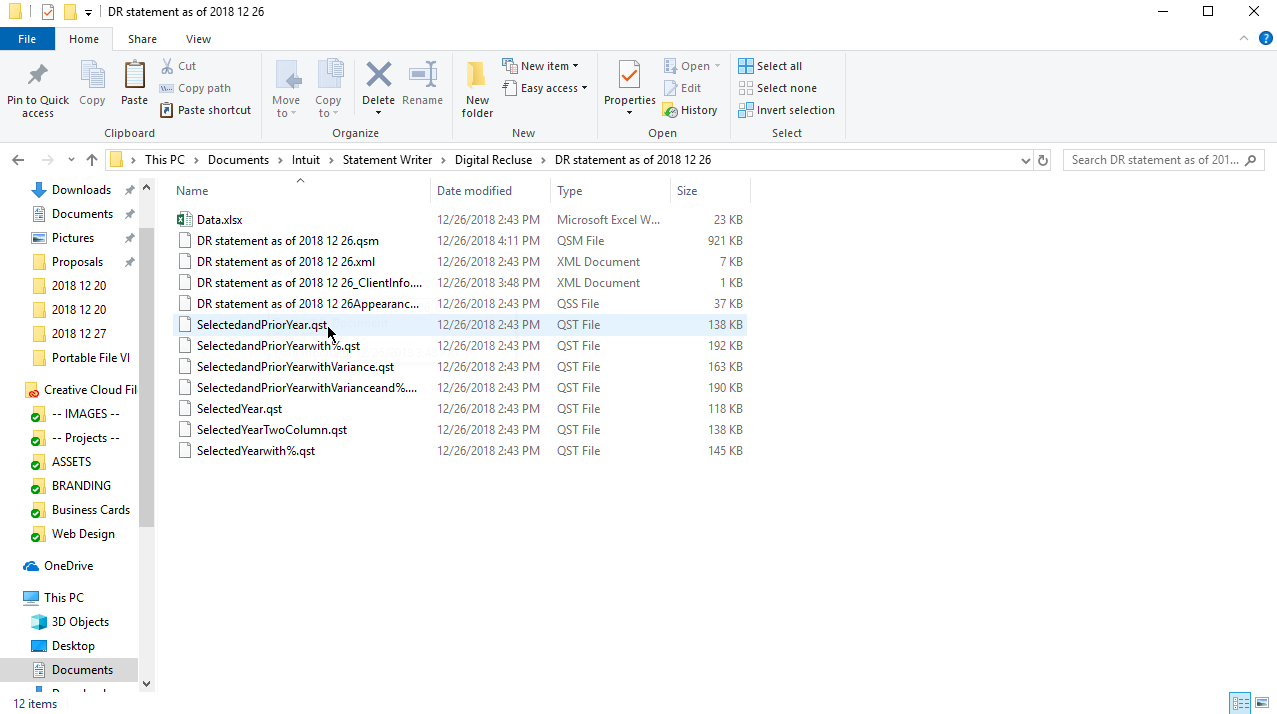
The QSM file will be the central file you will pick when you open a report, while other files are auxiliary to the re-building of the reports – when you open the reports again.
Your Backup File Can Also Be Your Access Location

A Warning May Show Each Time You Open Your QuickBooks Desktop Statement File via Report Designer
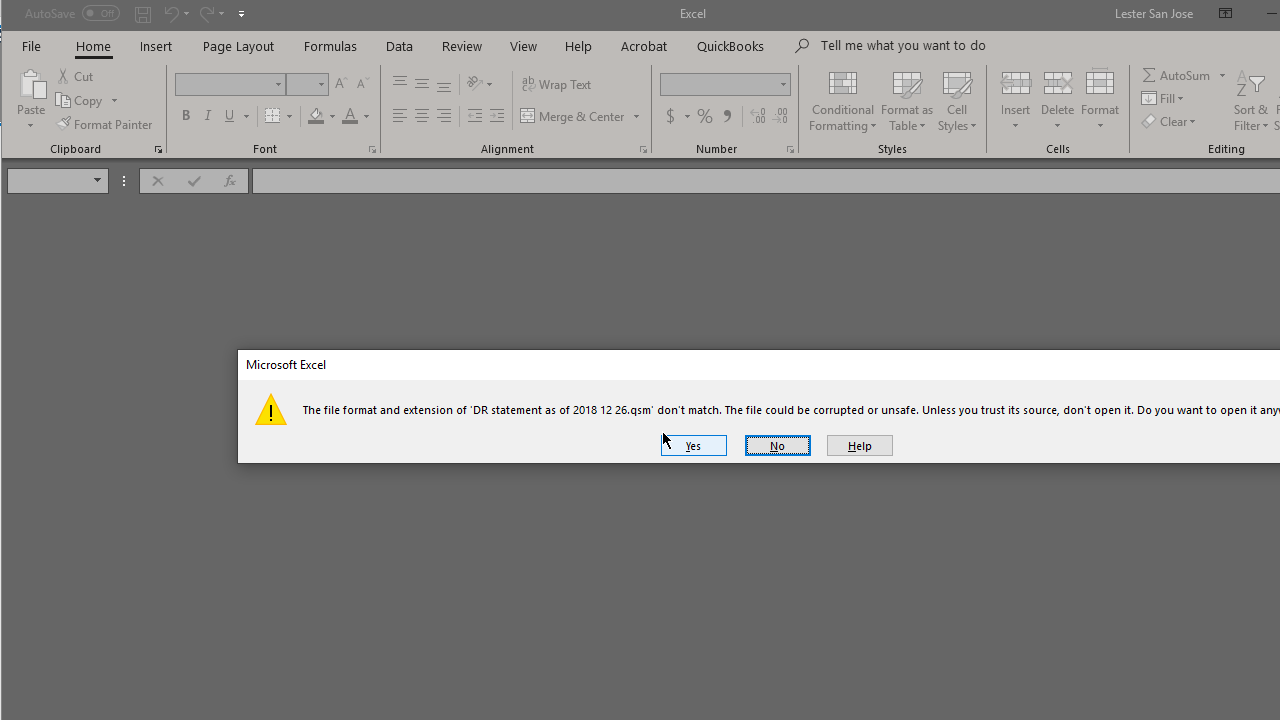
You can ignore the warning, and click “Yes” and it should open as expected.
As We Set to Wrap Up Creating and Restoring a QuickBooks Portable File
We will explore the last item you consider when you decide to create or restore a QuickBooks Desktop Portable File: the Transaction Log File or .TLG file. We look into what it is; where it’s used; how important it is in file restoration; and what is needing to be known – when attempting to bring this back upon restoring a portable file onto another workstation. As we approach the New Year, we don’t want this to be something you have to undergo as you take on year-end tasks. If you have additional questions about QuickBooks Statement Writer or its Report Designer – like how to create a basic statement, contact us!
Take advantage of a complimentary consultation surrounding year-end tasks by scheduling an appointment to speak with your ebs Controller – clicking here. We will make sure all this, in conjunction with your QuickBooks Desktop Company File data, will operate smoothly as we move through 2019.



